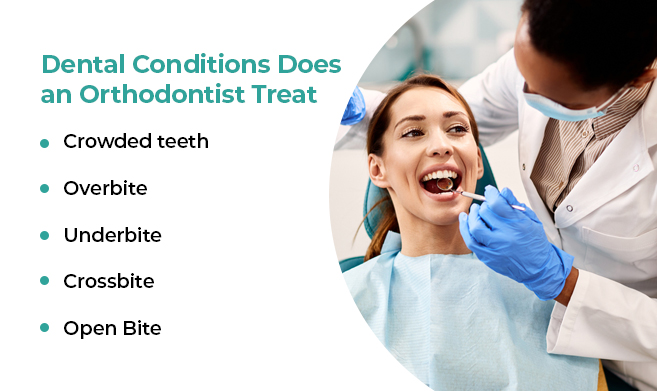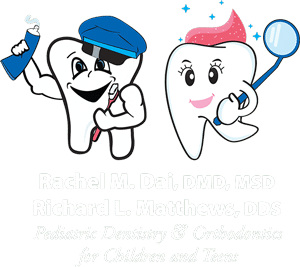The 5-Second Trick For Legacy Orthodontics
The 5-Second Trick For Legacy Orthodontics
Blog Article
The Buzz on Legacy Orthodontics
Table of ContentsAll About Legacy OrthodonticsThe Buzz on Legacy OrthodonticsLegacy Orthodontics Fundamentals ExplainedSome Known Details About Legacy Orthodontics Unknown Facts About Legacy Orthodontics
In addition, we supply adjustable treatment timetables, versatile repayment options and a fun, delightful experience.An orthodontist is a dental practitioner trained to diagnose, prevent, and deal with teeth and jaw abnormalities. Orthodontists work with individuals of all ages, from children to grownups.
Malocclusion, or misaligned teeth, can result in oral problems, consisting of tooth decay, gum condition, and tough or excruciating chewing. Yet not everyone is born with straight teeth. If you have a negative bite or large rooms between your teeth, you might want to get in touch with a dental professional specializing in orthodontic treatment.
Excitement About Legacy Orthodontics
( Image Credit Rating: DigitalVision/Getty Images) Orthodontists utilize fixed and detachable dental gadgets, like braces, retainers, and bands, to transform the setting of teeth in your mouth. Orthodontic therapy is for oral abnormalities, including: Crooked teethBite issues, like an overbite or an underbiteCrowded teeth or teeth that are too much apartJaw misalignmentThe objective of orthodontic treatment is to boost your bite.
A healthy and balanced bite guarantees you can consume, eat, and talk effectively. While you might assume of orthodontists as mainly for youngsters or teens who require dental braces, they can deal with dental issues at any kind of age. Orthodontists participate in college, dental school, and orthodontic college. After graduation, they spend 2 or 3 years in an orthodontic residency program.
All orthodontists are dental professionals, yet not all dental practitioners are orthodontists. Orthodontic residency programs offer extensive, concentrated guideline for oral specialists. They concentrate on 2 locations: Just how to correctly and safely relocate teeth Just how to appropriately guide growth in the teeth, jaw, and faceOnce an orthodontist has completed training, they have the choice to come to be board certified.
The Definitive Guide for Legacy Orthodontics
Misalignment, or malocclusion, is one of the most typical reason individuals see an orthodontist. It is hereditary and is the result of dimension distinctions between the upper and reduced jaw or in between the jaw and teeth. Malocclusion causes tooth overcrowding, a misshapen jaw, YOURURL.com or irregular bite patterns. Malocclusion is usually treated with: Your orthodontist attaches metal, ceramic, or plastic square bonds to your teeth.
Some individuals need a headwear to assist relocate teeth right into line with stress from outside the mouth. A retainer is a customized device that maintains your teeth in place.
They can create extra area in the mouth without having to draw teeth. Orthodontists use cables, medical screws, or plates to support your jaw bone.
You might need to see an orthodontist if you have: Crowding or not enough space for all of your teethOverbite, when your top teeth come your base teethUnderbite, when your bottom teeth are too far forwardSpacing or problems with gapsCrossbite, which is when your top teeth fit behind your base teeth when your mouth is closedOpen bite or an upright space between your front bottom and top teethMisplaced midline, when the center of your bottom and upper teeth don't line up Remedying an oral malocclusion can: Make biting, eating, and talking easierImprove the proportion of our face and your overall appearanceEase pain from temporomandibular joint disordersSeparate your teeth and make them much easier to cleanse, aiding protect against tooth decay or dental caries It's often a dentist that initially notifications misaligned teeth during a regular exam.
The Only Guide to Legacy Orthodontics

Throughout your initial orthodontic assessment, you'll likely have: An oral examPhotos taken of your face and smileDental X-raysPanoramic (360 degree) X-rays of your face and headImpressions to produce molds of your teethThese tests will help your orthodontist understand exactly how to wage your treatment. orthodontist. An orthodontist is a dental professional who's had training to treat your teeth and jaw
Orthodontists may execute surgery, exams,X-rays,and more to aid you achieve an extra comfy, much healthier smile. An orthodontist is concentrated on your bite, so something like a damaged tooth would certainly be dealt with by a dental practitioner. Orthodontists are dental practitioners yet not all dental practitioners are orthodontists. Orthodontists are concentrated on your bite, or the means your teeth meshed, and the straightness of your teeth.
Ever asked yourself exactly how celebs always appear to have completely aligned teeth? Orthodontists are oral professionals who concentrate on correcting abnormalities in the teeth and jaws.
What Does Legacy Orthodontics Mean?

, orthodontists have a varied toolkit at their disposal. These tried-and-true dental braces utilize a system of braces adhered to the teeth and attached by cords.
These removable trays are customized to considerably shift the teeth's setting. In cases of slim jaws, palatal expanders can be used to produce room for appropriate tooth alignment.
Report this page